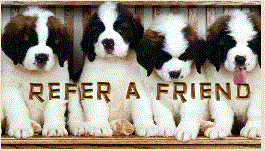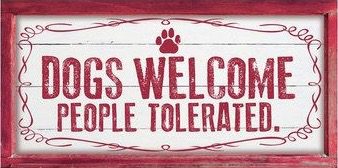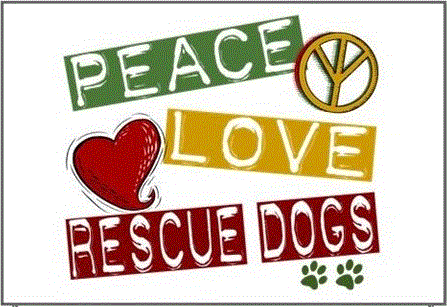Because adopting a new pet comes with a lot of change for both pet and pet parent, we have compiled a checklist and information list to help make the transition as smooth as possible.
Things to consider:
- Do you have any other pets and how will they react to a new pet?
- Is your current residence suited to the pet you are considering?
- How will your social life or work obligations affect your ability to care for a pet?
- Do you have a plan for your new pet during vacations and/or work travel?
- How do the people you live with feel about having a pet in the house?
- Are you (or your spouse, partner or roommate) intolerant of hair, dirt and other realities of sharing your home with a pet, such as allergies?
- Do you or any of your household/family members have health issues that may be affected by a pet?
What breed, or species, of animal is the best fit with your current lifestyle? - Is there tension in the home? Pets quickly pick up on stress in the home, and it can exacerbate their health and behavior problems.
- Is there an adult in the family who has agreed to be ultimately responsible for the pets’ care?
- What do you expect your pet to contribute to your life? For example, do you want a running and hiking buddy, or is your idea of exercise watching it on TV?
- If you are thinking of adopting a young animal, do you have the time and patience to work with the pet through its adolescence, taking house-breaking, chewing and energy-level into account?
- Have you considered your lifestyle carefully and determined whether a younger or older animal would be a better match for you?
- Can you train and handle a pet with behavior issues or are you looking for an easy-going friend?
- Do you need a pet who will be reliable with children or one you can take with you when you travel?
- Do you want a pet who follows you all around the house or would you prefer a less clingy, more independent character?
Size Considerations:
- What size dog can your home accommodate?
- Will you have enough room if your dog grows to be bigger than expected?
- What size pet would suit the other people who live in or visit your home regularly?
- Do you have another pet to consider when choosing the size of your next pet?
- How big a pet can you travel comfortably with?
Pet Costs:
Our adoption fees include spaying or neutering, vaccinations including rabies, microchipping, deworming and any necessary medical care required for each animal. It also includes a professional training evaluation and assessment.
Additional expenses include:
- Quality Food
- Routine veterinary care
- Flea, Tick & Heart Worm Preventative
- Licensing according to local regulations
- Collars, leashes and identification tags
- Crate, bed and blanket
- Toys, bones, chews, and biscuits
- Basic grooming equipment and supplies or professional grooming (depending on your new pets’ needs)
- Pet cleaning supplies
- Permanent identification, such as a microchip or tattoo
- Training classes
Unexpected Costs:
Accidents and illness can result in costly emergency veterinary care.
Recovery tools for finding a missing pet can include posters and rewards.
A pet with special physical or behavioral challenges may require specialized professional support to overcome any obstacles these issues present.
Time Considerations:
- Adult dogs need to be fed two times a day and puppies three more times a day. Both dogs and puppies need a constant supply of fresh water with the exception of overnight.
- A responsible pet parent should spend a minimum of two hours per day giving direct attention to his or her pet. This may include training, exercising, grooming, and playing or, may just be lap time on the couch. Dogs need to be taken out to potty a minimum of four times a day. I reccommend these potty times: first thing in the morning, mid-day, 5-6pm, and once before bed.
- A pet with an abundance of energy needs more time to exercise and interactive toys to keep them entertained.
- Pets with long coats need 20 minutes a day of grooming to prevent matting.
- Pets with certain medical conditions may need additional attention, including specifically timed injections in the case of diabetic animals.
Remember that adopted pets may need additional bonding and reassurance time in the early weeks.
Shopping Checklist:
Also, be sure to find out which food your pet was eating in the shelter or foster home so that you can provide the same in the beginning, again to ease the transition. After the pet has settled in, talk with your veterinarian about switching to the food of your choice.
Once you have selected your pet, here is a checklist of supplies you may need:
Necessary Items for Dogs:
- Food. Wet or Canned food is never a good idea (unless your pet has no teeth). It can cause gastrointestinal problems and will significantly increase the amount of tartar on your dogs’ teeth. We suggest you feed as large a bite dry kibble as your dog can chew. This has been scientifically proven to reduce dental disease. Avoid any food labeled “grain-free” unless absolutely necessary due to specific food allergies. Here are some quality food brands that I recommend: 4 Health, Victor, Halo, Go Solutions, Addiction, Nature’s Logic, Lotus Dog Food, Brothers, Redford, Canine Caviar, PetKind, Weruva, By Nature and Honest Kitchen.
- Food and water bowls. If your dog is to begin in a crate I highly recommend “Snappy Fit” bowls or “Quick Lock Crocks”
- Collar.
- Four to six-foot leash depending on the size of your dog. I reccommend four foot for puppies and dogs under 25lbs.
- ID tag with your phone number and the words “REWARD”
- Foldable metal crate. I prefer a double door crate.
- Dog bed, crate mat or folded comforter
- Flea. Tick & Heart Worm Preventitive
- Doggie shampoo and conditioner. I recommend several brands based on the individual dog. Please ask.
- Nail clippers. I do not reccommend guillotine style. I prefer scissor or plier style clippers or a grinder if you are careful and comfortable with it.
- Canine toothbrush and toothpaste
- Brush or comb (depends on your pets’ coat length and type)
- Super-absorbent paper towels
- Sponge and scrub brush
- Non-toxic enzymatic cleanser. I prefer the Woolite brand.
- Plastic poop baggies (biodegradable ones are best) or pooper scooper
- Absorbent house-training pads for very young or elderly dogs
- Variety of toys (a ball, rope, squeaky, chew toy and puzzle toy are good starts)
- Variety of treats (biscuits, chewy treats or larger natural chews.)
- First-aid supplies
- Baby gate(s) or pens



























